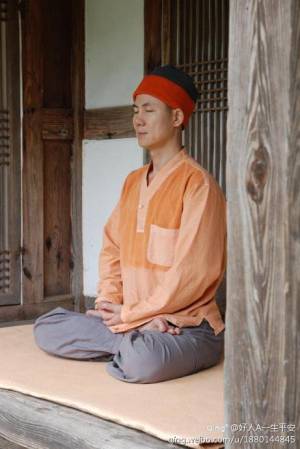<html>
<div style="font-family: Chalkduster; font-size: 13pt; color: #fff;">
<ul>
<li> <a href="http://www.camcc.org/">Home</a> + <a href="http://www.camcc.org/events">Events</a>
</li><li> <a href="http://www.camcc.org/about/Chinese-classics">Chinese Classics</a>
</li><li> Reading Groups
<ul>
<li> <a href="http://www.camcc.org/reading-group"> Chinese </a>
</li><li> <a href="http://www.camcc.org/reading-group/en/">English<sup>beta</sup></a>
</li></ul>
</li><li> <a href="http://www.camcc.org/discussion-group/">Discussion Grp.</a>
</li><li> <a href="http://www.camcc.org/tea-party">Tea Ceremony</a>
</li><li> <a href="http://www.camcc.org/tea-yoga">Tea Yoga</a>
<!--
</li><li> <a href="http://www.camcc.org/other-activities">More Activities</a>
-->
</li><li> <a href="http://www.camcc.org/blog/">Blog</a> + <a href="http://www.camcc.org/links">Links</a>
</li><li> <a href="http://www.camcc.org/about/">About Us</a>
<!--</li><li> <a href="http://www.camcc.org/contact">Contact Us</a> -->
</li><li> <a href="http://www.camcc.org/internal/home">Internal</a>
</li></ul>
</div>
</html>
----
[[president@camcc.org|Email us]]. Or follow us
on [[http://www.facebook.com/groups/182337131809002/|{{facebook.png?32}}]] [[http://page.renren.com/601199149|{{renren_logo.jpg?32}}]] [[http://blog.sina.com.cn/u/1965219823|{{wordpress.png?32}}]]
<html>
<div style="margin-top:-19px">
<div style="width: 22%; float: left; text-align:center">
<a href="http://www.camcc.org">
<img src="http://www.camcc.org/_media/logo-经典方篆-roften.png" width="145" height="145" alt="Camcc" />
</a>
</div>
<div style="width:78%; height:145px; float:right; margin-top: 0px; border-bottom:solid 5px #000000;">
<div style="width: 3%; float: left; margin-top:40px;"></div>
<div style="width: 67%; float: left; font-size: 115%; margin-top:15px;">
<h1>
Cambridge Chinese Classics</br>
剑桥中国传统文化研习社
</h1>
To study, practice and promote Chinese classics
</div>
<div style="width: 30%; font-size: 80%; margin-top: -10px; float: left;">
<div style="height: 130px;width: 100%;float:left">
</html>
**Coming events:**
{{iCalendar>https://www.google.com/calendar/ical/cam.chineseclassics%40gmail.com/public/basic.ics#from=today&previewDays=30&showEndDates=1&&numberOfEntries=1&showAs=list}}
<html>
</div>
<div style="height: 20px;width: 100%;float:left">
Join our <a href="https://lists.cam.ac.uk/mailman/listinfo/soc-camcc">mailing list</a>
</div>
</div>
</div>
</div>
<style>
#dokuwiki__aside {
//border-right: dashed 1px black;
border-right: none;
}
.dokuwiki .wrapper {
border-bottom: solid 1px black;
}
blockquote {
border-left: none !important;\\2px solid #8cacbb;
padding-left: 0.6em !important;
}
div.dokuwiki div.comment_wrapper { background-color: transparent !important;}
</style>
</html>
Sidebar
Wisdom

静岩法师 Master Jingyan
Tea yoga is a system of healthy maintenance practice developed by Master Jingyan, a person who was raised up in a Buddhist Temple in Korean, and started to learn yoga and zen since 8 years old. In 1992, He went to China to study acupuncture in Beijing University of Chinese medicine (北京中医药大学). During this time, he realized that the wisdom of Chinese traditional medicine lies in Chinese ancient philosophy. He then went to Peking University (北京大学) for a postgraduate study in Chinese traditional philosophy with Professor Yulie Lou (楼宇烈), and finally got the PhD degree in Chinese Buddhism philosophy in Peking University. He combined the Chinese Zen culture, Yoga, Chinese traditional medicine, and designed the system of Tea yoga to help modern people release the pressure, balance the body and inner heart, and develop the quality of life.
Tea yoga is a system does not only emphasize the physical level of health, but also the health of the inner, and the connection of the heart, mind and body. There is a spirit of harmony inside, which is rooted in the wisdom of ancient Chinese and India philosophy. It emphasizes wisdom in 'gratitude' (感恩), 'smile gently' (微笑), 'folding hands in front of the chest' (合掌), 'cross-legged sitting posture' (静坐), 'modest'(谦虚), 'impermanence'(无常), 'corresponding' (相应), 'no self'(无我), and helps the individuals and society reach harmony both inside and outside.These forms the essentials to be mined during practicing tea yoga:
Essential during practicing tea meditation
++++感恩 Gratefulness|
We are grateful for the chance to practice Tea yoga at this moment. We thank the time, the venue, the tea leaves, the tea bowl, the water…and all effort by people to bring them together. With thanks and appreciation in heart, we embark on this path our journey of tea yoga.
“以感恩的心来喝这一杯茶,想到天地万物成就这一杯茶水,想到相聚品茶之缘的难得” ————净慧法师++++
++++真诚 Sincerity|
With only sincerity and a willingness to understand the way of tea yoga, it spurs our concentration and dedication. Each step is crucial to our experience. It is a practice with spirituality in details. Sincerity and focus is the beginning of the spiritual essence of what may seem to be an ordinary job.
“为天下至诚,为能尽其性” ———— 《中庸》
It is only he who is possessed of the most complete sincerity that can fully develop the nature (of himself and the others) —-<The Doctrine of Mean>
++++
++++微笑 “gentle smile”|
A gentle smile could help to relax the muscles on the face and relieve the inner tension, it also help people to get happiness, clear up the bothering, and show a beautiful and true self to the world. During the whole process of tea yoga practice, we emphasize always to keep a gentle smile on the face.
在不二茶熏修养的所有过程中,我们提倡始终保持微笑的表情。一个恬悦的微笑,传递了一切,包容了一切。绽放了心灵的和谐、完美与圆融,让我们看到真正的自我,也向世界呈现一颗柔美、开放、澄净的心。
++++
++++谦虚 Modest|
With the old experience, opinions, and imaginations people tend to judge the new things they are learning. During the practicing of tea yoga, we emphasize to forget all about yourself and completely open to the new experience. Only with a pure and innocent mind, you could have the true taste of the tea.
谦虚意味着完全的开放和接受,这是我们与一切方法进行沟通的桥梁,也是与所有人,所有事沟通的根本条件。
++++
++++不二相应 connection/corresponding/harmony|
People have bothering and worries because of the small 'self', which prevent them from getting connected with the broader universe. During the tea meditation, we experience the full mindfulness, and forget about 'yourself'. Just let the body and heart get in connection and corresponding with the tea at the present. Forget “yourself” and you will find and enjoy your TRUE SELF. At the present, at that moment there is no separation between yourself and drinking tea, between yourself and the things you are doing. Just enjoy the wonderful moment at present. That is 'Bu Er', and this is real 'harmony'.
++++
Eight Classics
There are eight Classics of tea yoga which are list by Master Jingyan. They are from Buddhism, Taoism, Confucianism, Traditional Chinese medicine, and Yoga.
Buddhism: 维摩诘经 Vimalakirti Sutra
Taoism: 道德经 Tao Te Ching
Confucians: 中庸 The Doctrine of Mean
Chinese Traditional Medicine: 黄帝内经 Yellow Emperor's Inner Canon
Yoga:瑜伽经 Yoga Sutras
Zen:信心铭 Hsin-hsin Ming — verses on the faith mind 信心铭.docx
Meditation:静坐修道与长生不老 Monastic and ever-young meditation(南怀瑾)
Introduction of Chinese traditional Culture: 中国的品格 The Characters of China (楼宇烈)
Page Tools
User Tools
<html>
© Cambridge Chinese Classics, 2012 - 2017
<script type="text/javascript">
var _gaq = _gaq || [];
_gaq.push(['_setAccount', 'UA-27605058-1']);
_gaq.push(['_trackPageview']);
(function() {
var ga = document.createElement('script'); ga.type = 'text/javascript'; ga.async = true;
ga.src = ('https:' == document.location.protocol ? 'https://ssl' : 'http://www') + '.google-analytics.com/ga.js';
var s = document.getElementsByTagName('script')[0]; s.parentNode.insertBefore(ga, s);
})();
</script>
</html>